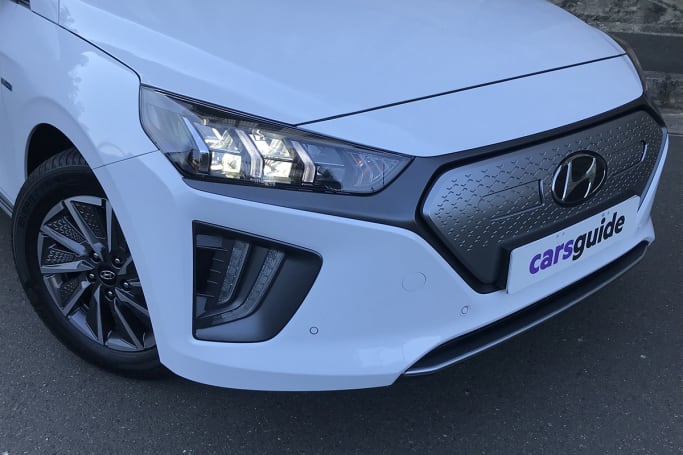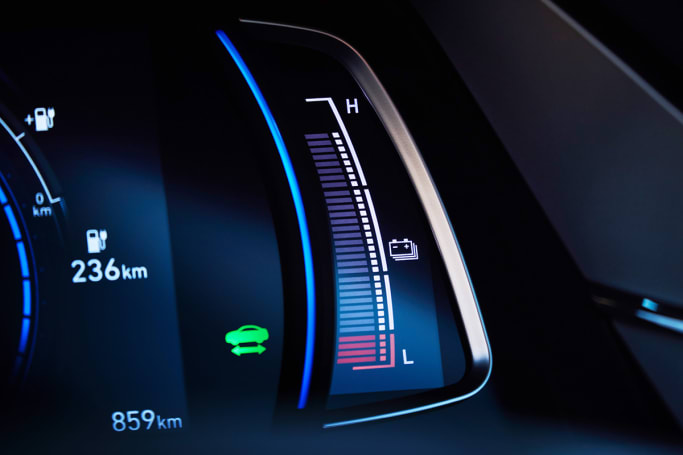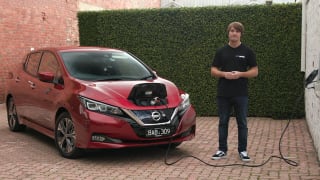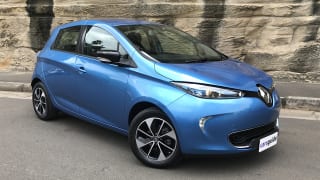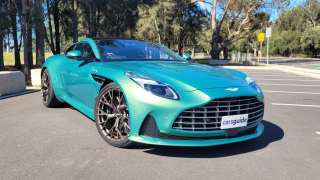The updated Ioniq has been given a visual tszuj, but key external dimensions are unchanged. The sloping, fastback profile is the same, the nose now sporting a satin grey grille insert with active shutters either side of the centre logo. The aim is to provide extra cooling to the motor when required, maintaining the best possible aero profile at other times.

LED daytime running lights are integrated into angular nose vents designed to create a wind-cheating ‘air curtain’ around the front wheels, and the 16-inch alloy rims have been “aerodynamically sculpted” to further optimise the car’s aerodynamics.
Combination LED tail-lights add some extra drama at the rear, with the bumper now featuring a matt grey insert to match the nose treatment.
Inside, the dashboard is all new with a 10.25-inch tablet-style media screen taking centre stage. The climate control set-up has also been refreshed (with capacitive touch controls replacing buttons), sleek piano black finishes neatly integrating the two areas, and the Premium grade’s ‘leather-appointed’ seats look quality and feel good.

In terms of other materials used, there are sugar-cane bi-products (25 per cent of the raw materials used in the soft-touch door trim panels), and recycled plastic, powdered wood and volcanic stone (10 per cent of plastics on other interior surfaces). Bio-fabrics (20 per cent sugar-cane bi-products) are used in the headliner and carpet.
An interesting design tweak under the hood is the styling effort applied to the electric motor to make it look more like a conventional engine. The motor’s relatively small size is neatly camouflaged by a carefully chiselled and profiled plastic shroud placed over the top of it to cover the empty spaces below and give the impression of a longitudinally installed engine.









